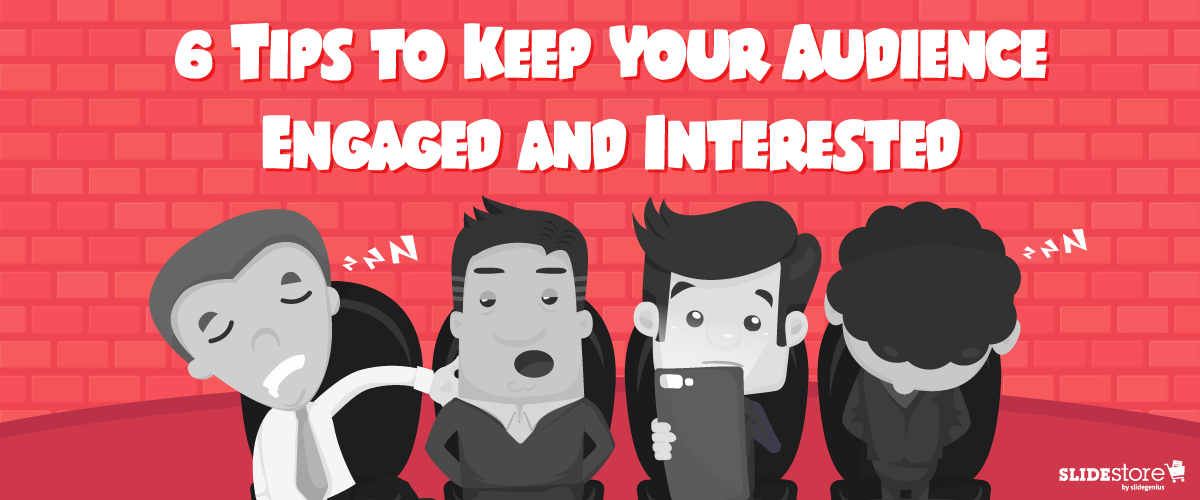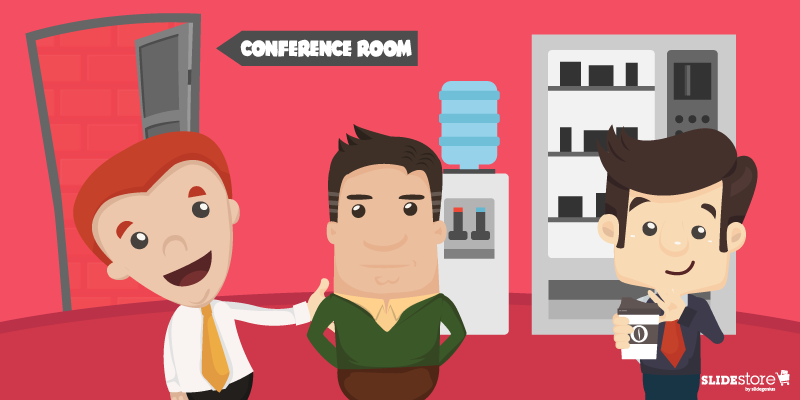
As a presenter taking the limelight, you shouldn’t expect the audience to give you their full attention outright. You have to understand that they have other stuff going on in their lives. You can’t force them to listen, but you can try to win their time and attention. One way to earn your place in the spotlight is to prepare for your presentation beforehand. Polish your content and decide on the best style of delivery. Make sure the method you choose is good enough to intrigue the audience and keep them hooked until the last slide.Preparation is key to every presentation, but it’d be foolish to suppose even for a second that it’s enough to cover all the variables. No matter how much you prepare, you can’t predict what will happen onstage. You may have a brilliant content and a killer pitch deck but still have no one paying attention to you. It doesn’t necessarily mean that you’re a bad presenter, and it surely doesn’t mean that the people in front of you are rude. Sometimes, it simply means that your efforts and methods are not enough to draw the audience away from their other more important priorities. So, what do you do? Should you just ignore your listeners’ indifference and rush through the presentation to get it all over with? No. The worst thing that can happen in a presentation is not for the audience to lose interest. The worst thing is for the presenter to give up trying to bring the audience back into the moment.A responsible presenter reads the warning signs that may indicate that the audience is falling behind. The signs can be subtle or obvious: yawning, chattering, slouching, standing to leave the room, staring blankly into space, refusing to return eye contact, and fiddling with gadgets, among others. A seasoned presenter can detect these tell-tale signs spot on.
So, what do you do? Should you just ignore your listeners’ indifference and rush through the presentation to get it all over with? No. The worst thing that can happen in a presentation is not for the audience to lose interest. The worst thing is for the presenter to give up trying to bring the audience back into the moment.A responsible presenter reads the warning signs that may indicate that the audience is falling behind. The signs can be subtle or obvious: yawning, chattering, slouching, standing to leave the room, staring blankly into space, refusing to return eye contact, and fiddling with gadgets, among others. A seasoned presenter can detect these tell-tale signs spot on.
Pulling the Audience Back into the Moment
When you see the abovementioned signs, you can’t just go on with whatever you’re doing. The fact that nobody’s paying attention to you anymore should nudge you into doing something different. Otherwise, you’ll just be wasting everybody’s time. When you’re about to lose your audience’s attention, hit the reset button and start over again. Here are some of the things you can do:
1. Pause, reflect, and regroup
When everything seems to crash and burn, stop where you are. Obviously, nothing of what you’re planning to say or do next can make the audience care about your presentation. So, before you make any more mistakes, just stop and reflect on when and how you lost them. What did you do wrong? Why did they remain impassive when you said something that was supposed to intrigue them? Think of how you can shake things up, and figure out the best way to go from there. Sometimes, it’s better to improvise than go with something that is evidently not working out.
2. Inject stories into your presentation
Maybe the reason they are shutting you down is that you’re shoving hard data down their throats. Even technical professionals can get tired of numbers and figures when they’re presented blandly. Instead of sticking to one type of content that is sure to bore the crowd, share personal stories and anecdotes that shine a new light into your topic. People are hardwired to listen to stories because they’re engaging and undemanding. If you can share an interesting story that is relevant to the subject, you can pull the audience out of their trance and draw them back into your presentation.
3. Use humor to liven up the mood
This isn’t to say that you have to make the room shake with laughter. A small chuckle or a subtle smile should do the trick. Use humor to get into your audience’s good side and lighten the mood in the room. Just remember to keep your relevant to the presentation.
4. Break the pattern you’re in
People pay attention to any kind of change, so make sure to make your presentation as diverse and sundry as possible. Use transitional devices to prompt the audience that you’re shifting to another type of content. This will help them refocus and gradually get back on track.
5. Shift the limelight to the audience
A presentation should ideally be a dialogue rather than a monologue. It should be a two-way conversation that the audience can participate in. So, when you get the chance, turn the tables and give the audience an opportunity to talk. You can do this by engaging them in a Q & A session where you can take feedback and gauge how interested they are. It’s also an opportunity for your listeners to clarify things they might have missed.
6. Take small breaks after sections
People can only take in too much information. That’s why you need to give your audience a break every now and then. Microbreaks can leave them reinvigorated as they take refreshments and relieve themselves in the restroom. When they return to their seats, they will have enough energy to refocus into your presentation.
7. Check your body language
Maybe your stage presence (or lack of) is what leaves the audience inert. Maybe you’re not connecting with them enough through body language. Check your stance, gestures, and facial expressions. Make sure that you convey authority and confidence without coming off as arrogant and overbearing. Projecting the right body language can help you bring back their attention and save your presentation.One thing you have to remember to avoid losing your audience is to make the presentation less about you and more about them. Everything you do should cater to their interests so that they will not be tempted to attend to other things while you’re up there onstage presenting valuable information.
Resources:
Biesenbach, Rob. “What You Can Do When Your Audience Tunes Out.” Fripp. n.d. www.fripp.com/what-you-can-do-when-your-audience-tunes-outDavis, Keith. “How to Use Humor in Your Speeches and Presentations.” Easy Public Speaking. May 20, 2010. easypublicspeaking.co.uk/public-speaking-humourFrenzel, Leif. “How to Avoid Losing the Audience in a Technical Talk.” Code Affine. February 26, 2015. www.codeaffine.com/2015/02/26/how-to-keep-audience-attention-during-presentationMac, Dave. “Do You Recognize the Five Early Warning Signs of a Bored Audience?” n.d. www.presentationblogger.com/do-you-recognize-the-5-early-warnings-signs-of-a-bored-audienceMitchell, Olivia. “What to Do When You’re Losing Your Audience.” Speaking About Presenting. n.d. www.speakingaboutpresenting.com/audience/losing-audienceSomlai, Fisher. “The Deck Is a Dialogue: Three Steps to Conversational Presenting.” Business. February 22, 2017. www.business.com/articles/the-deck-is-a-dialogue-3-steps-to-conversational-presenting“What to Do When You’re Losing Your Audience.” The Total Communicator. n.d. totalcommunicator.com/vol2_2/losingaudience.html









